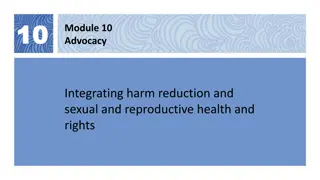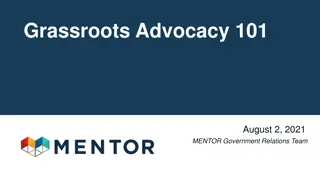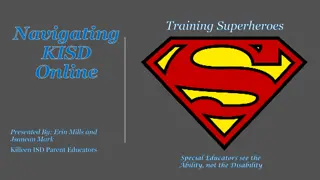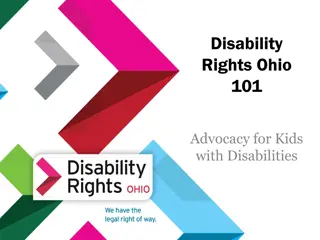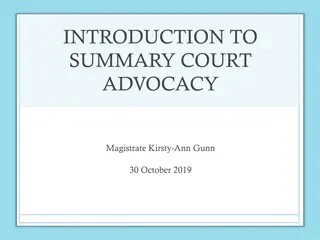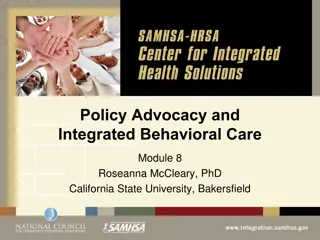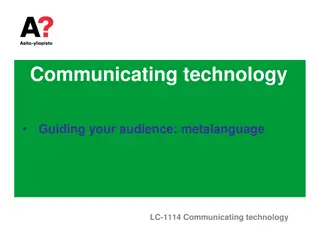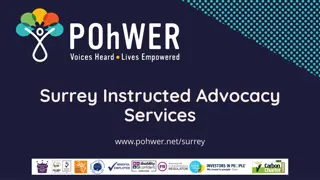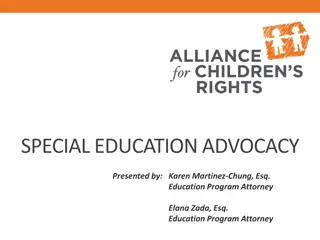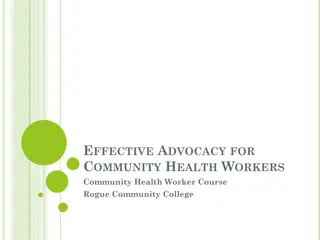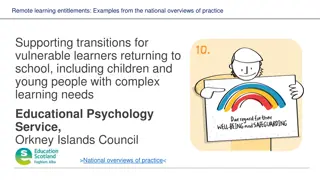Navigating Transitions in Special Education Advocacy
Special Education Advocate Marilyn J. Bartlett, J.D., Ph.D., discusses the importance of preparing for transitions in education for students with dyslexia. The presentation covers legal requirements, transition services, and the role of schools in facilitating successful transitions at various stages. Bartlett emphasizes the significance of early preparation and collaboration between schools to ensure a smooth transition for students requiring special services.
Download Presentation

Please find below an Image/Link to download the presentation.
The content on the website is provided AS IS for your information and personal use only. It may not be sold, licensed, or shared on other websites without obtaining consent from the author.If you encounter any issues during the download, it is possible that the publisher has removed the file from their server.
You are allowed to download the files provided on this website for personal or commercial use, subject to the condition that they are used lawfully. All files are the property of their respective owners.
The content on the website is provided AS IS for your information and personal use only. It may not be sold, licensed, or shared on other websites without obtaining consent from the author.
E N D
Presentation Transcript
Marilyn J. Bartlett, J.D., Ph.D. Special Education Advocate and Consultant Demystifying Dyslexia: A Resource Day Millersville University January 26, 2019
AGENDA Transitioning: The law I. When should what be done? I. Elementary/Middle to High School II. III. High School to College II. Q&A III. Bonus: (Time permitting!) Dual Enrollment I. FERPA II.
The Three Rules Rule #1: Prepare Rule #2: Prepare Rule #3: Prepare
What is the transition law? The transition process is mandated by law to begin at age 16, to wit: (b) Transition services. Beginning not later than the first IEP to be in effect when the child turns 16, or younger if determined appropriate by the IEP Team, and updated annually, thereafter, the IEP must include
Continue (1) Appropriate measurable postsecondary goals based upon age appropriate transition assessments related to training, education, employment, and, where appropriate, independent living skills; and (2) The transition services (including courses of study) needed to assist the child in reaching those goals.
Why must we talk about transitions? Every transition point changing schools, changing teachers, elementary to middle school, middle school to high school, high school to work, high school to college each requires preparation! Preparation for transitioning begins the day the student is identified as needing special services to enable the student to learn!
Elementary and Middle/Jr.H. Transitioning must be added to the IEP. Personnel from the receiving school needs to be invited to an IEP meeting in the Spring prior to moving up to the new school. The receiving school personnel must be a part of the Goals and Assessments for the new school. If a triennial evaluation is in order, then the receiving school personnel should be a part of the process deciding which tests to give. For example, the math teacher can ask for math achievement testing.
When should the discussion about post-secondary begin? The law says at 16 years. WRONG! If the student is college material, then the discussion needs to begin back in the fifth or sixth grade! Many districts offer pre-algebra and Spanish in the seventh and eighth grades
The Parents Role Be willing to try different accommodations and modifications. Maintain a time-line to track that which works and that which does not work. Involve the student at every possible point. Do not protect the student from the process. Books about dyslexia for the student. Include transitioning into the IEP!! Bring the student to the new school for each transition!
Discuss plans after high school going to college, the university, trade school, technical school. Give the student a voice! When the student is 14 or in the eighth grade, you need to ask about what the school personnel have planned for beginning the transition to the post- secondary education. Get it into the IEP or 504 Plan The student needs to have an idea of which post- secondary schools are on the list of possibilities. Parents need to research those schools for requirements and what services it offers for handicapped students. (See: The Ohio State!)
When the student is 16 ?? The LEA must invite a student with a disability to attend the student s IEP Team meeting if a purpose of the meeting will be the consideration of the postsecondary goals for the child and the transition services needed to assist the child in reaching those goals under 300.320(b). [34 CFR 300.321(b)] [20 U.S.C. 1414(d)(1)(B)]
NoCorrectionwhen the student is in 7th/8thgrade Plan backwards last full evaluation should be Spring of the junior year or Fall of the senior year. Assume Spring Jr. Year; Prior to that, Spring of 8thgrade; Prior to that, Spring of 5thGrade. Why?? Think: Accommodations on the ACT/SAT; You need a history of testing accommodations, not just learning accommodations. Why?? Think: Post-Secondary; You want to take the accommodations that work for you to college with you! Why?? Think: The District will pay for evaluations until you graduate. Once you are in college, you must pay out of pocket. And you will need another full Evaluation while you are in college to maintain protection under the ADA-AA.
Fall of Grade 8: DecideIs the student pursuing work, vocational education, or college after high school. Don t know then play it safe and aim for college. Decisions can change Know thyself! Write a story about how your disability makes it difficult for you to learn. Why were you tested and what accommodations work for you. What would happen if you didn t have testing accommodations? Update this as you learn more about what works for you!
Look at colleges Take a virtual trip before the physical trip to the campus. What are the Admissions requirements? ACT or SAT??? What majors are offered One that you want? When all else fails, major in Liberal Arts! Visit the Office of Disabilities Services on line. What is the application process to receive Accommodations? What accommodations are usually given to students? Does the college provide audio texts? What else? Do they provide tutors? Make lists of questions to ask them.
Research ACT/SAT requirements. Label your disability (disability categories that ACT/SAT acknowledge). Tell your story about how your disability makes learning/testing difficult. Amass all of the diagnostic documents such as the IEP/504 showing the history. Evaluation within the last three years (!!) List the accommodations currently in effect. List the accommodations you will need in order to take the test.
Typical accommodations Faculty notes and PPTs in advance Specific seating in the classroom Use of a computer/ipad FM transmitter Audio textbooks Assistive Technology (Read/Write; Organizers, Notewriter, ete.) Livescribe pen A scribe to take notes in class and write the exam Large Print handouts, quizzes, and tests A special room in which to take the exam. Testing in a separate room. Time and a half or double time to take the exam (ETS!) Exam over multiple days Stop-the-clock timing (a student with CP takes much longer to go to the lavatory)
Prepare for the Transition meeting Know what your student and you want! Identify four or five colleges/universities Know the entrance requirements of each Make a chart. Therefore, know what classes your student must take in H.S. in order to qualify. Know what accommodations students who have specific disabilities usually received at each college. the accommodations your student too try them out. Know what dates you need for the full evaluation schedule. These are might want to use
When the student is in 8thgrade Send a letter to the had of the special ed committee requesting a meeting to begin discussing post- secondary plans transition plans. The law says, age 16 or earlier! (Or do you want to wait until the student is in their junior year when the GenEd students have already had two years of college prep classes?) The district personnel will tell you that you are WAY TOO early not! Don t forget the Full Evaluation this year! Prepare your Agenda!
Transition meeting Agenda Statement of transition My plan after high school is to (earn a college degree). I plan to apply to the following colleges The colleges I want to attend usually require the following high school courses I plan to take the ACT/SAT at the end of the ninth grade to have a better idea of how I can prepare. To take the exam with accommodation, I need the following I want to have my high school accommodations changed to include the following I will need (number) of letters of recommendation for college. The Office of Disability Services at these colleges require documentation for me to qualify for accommodations under the ADA-AA I would like to receive my Summary of Performance by April in my senior year.
Why is all of this important? Students with special needs must be given a specific program of study leading to a standard or special diploma. The student must be given instruction or information on self-determination and advocacy. The school personnel must prepare transition goals to include in the IEP. Educational Testing Services!!
The IEP must include: Appropriate measurable postsecondary goals based upon age-appropriate transition assessments Related to training, education, employment and, where appropriate, independent living skills; The transition services (including courses of study) needed to assist the student in reaching those goals; and Beginning not later than one year before the child reaches the age of majority under State law, A statement that the child has been informed of the child s rights under Part B, if any, that will transfer to the child on reaching the age of majority under 300.520 [see 20 U.S.C. 1415(m)]. [34 CFR 300.320(b) and (c)] [20 U.S.C. 1414 (d)(1)(A)(i)(VIII)]
Teach the student to Self- Advocate! Most post-secondary institutions require the student have a Sec. 504 plan. However, according to AHEAD, universities now understand the importance of receiving the IEP. There is no reason the student cannot have BOTH an IEP and a 504 in high school!
Make sure this is all written into the IEP or the 504 plan. Make sure the goals are measurable and attainable. Insist that the student attend the meeting, if they haven t been attending all along. Modifications vs Accommodations Try out many accommodations. Plan for one final Full Evaluation between junior and senior year to carry the student in the post-secondary setting. Be sure to get a Summary of Performance (SOP) at graduation.
Summary of performance For a child whose eligibility under Part B terminates due to graduation, the LEA shall provide the child with a summary of the child s academic achievement and functional performance, which shall include recommendations on how to assist the child in meeting the child s postsecondary goals. [34 CFR 300.305(e)(3)] [20 U.S.C. 1414(c)(5)(B)(ii)]
Guidance from AHEAD Acceptable sources of documentation for substantiating a student s disability and request for particular accommodations: Primary Documentation: Student s Self-report Secondary Documentation: Observation and Interaction Tertiary documentation: Information From External or Third Parties
More Recommendations Meet with Guidance Counselors frequently while they are still in high school: Paperwork Accommodations Express the need to ADD a 504 plan early in the 11th grade year for students attending a 4 year college Suggest that the high school offer special orientation for all college bound students during the summer prior to freshmen year (maybe a part of that middle school transition ).
Youre IN! Congratulations! Visit the ODS page and follow the instructions to apply for accommodations. Plan to visit campus, if you can make the time. Check to see if YOU will be a part of an early orientation before regular Freshmen Orientation. If a program is offered to take a how to use the library, how to find the tutors, how to write a paper type of course, DO IT! Pack your thinks, you re going to college!
First things first Send back your acceptance! Follow the instructions of ODS Follow the instructions to communicate with your ACADEMIC Advisor Plan your classes ONLY take three or four classes first semester and PLAN TO EARN ALL A s !!! Remember: Every class begins with an A average; YOU have to work at getting a lower grade!
Upon arrival Once you have unpacked, walk around and meet new people! Plan to make one friend EVERY day for two weeks! Day two: Go to the ODS! BRING THAT FOLDER YOU PUT TOGETHER MONTHS AGO! Most likely you ll be assigned an Advisor this person is your best friend! (Chocolates!!) Usually, you will be given letters to give to your professors do not lose these! During orientation, walk around and find your classrooms.
Meet your professors! First class: Get your outline for the class. READ IT!!! After class, send an email to your professors, each of them, and make an appointment to meet personally with them. Do not be late for your meeting Bring Coffee and bagels! Give your professor the ODS letter and talk about your accommodations. Bring your File - remember that ? Also bring your outline and questions you have. Ask the professor to help you make a timeline in your calendar for all assignments due. Visit your professors OFTEN! They need to get to know YOU!
Self Advocacy YOU are your own best advocate! Three rules: Know your rights understand the ADA and Aec 504 Be polite be super polite be extra super polite! Send thank you notes and reiterate what was decided at your meetings. Stray in touch with your professors. ANY problems, do not try to solve them yourself: Seek the assistance of your ODS Advisor.
Current Information Association of Higher Education and Disabilities (AHEAD) Improving Transition Services for College-Bound Secondary Students with Learning Disabilities (http://coefaculty.valdosta.edu/lschmert/gera/volume6/sparkman-final.pdf) "Planning for Life After Special Education (http://www.dlc-ma.org/_manual/LASE_manual.htm) Special Needs Students and Transitions to Post Secondary Education (http://www.heqco.ca/SiteCollectionDocuments/Special%20Needs%20ENG.pdf) Preparing Students with Disabilities for Transition to College: A Framework Based on the PATH Model (http://www.ncda.org/aws/NCDA/pt/sd/news_article/39434/_PARENT/layout_details_cc/false) National Center for Learning Disabilities
Marilyn J Bartlett, J.D., Ph.D. Special Education Center for Advocacy SEA.Bartlett.Marilyn@gmail.com
Dual Enrollment Something more to think about!
What is dual enrollment/ credit? Dual credit as a process by which a high school junior or senior enrolls in a college course and receives simultaneous academic credit for the course from both the college and the high school.
Who is it for? Students enrolled in an approved Early College High School and individual students with demonstrated outstanding academic performance and capability (as evidenced by grade point average, ACT or SAT scores, or other assessment indicators) if approved by the principal of the high school and the chief academic officer of the college can enroll.
Dual Enrollment Qualified students earn college credits and experience the workload of a college class through this program. Advantage? $$$$$$$$$$$$$$ I ONLY recommend 2E s to enroll.
Do students get Accommodations? In a word: Yes Students with special needs who have an IEP or 504 plan may apply for accommodations. Students must visit the Office of Disability Serviced to get the application process. Accommodations are decided by the higher education institution.
Does it matter where the courses are taught? No. While dual credit courses are often taught on the secondary school campus to high school students only, a high school student can also take a course on the college campus and receive both high school and college credit. Location is between the District and HE Institution AND
Continue... Dual credit courses include both academic courses as well as technical courses. These courses are stepping stones from high school to college, serving as a path to academic degree programs or college-level workforce education courses.
How many classes can one take? Dual enrollment students may take up to 8 credits per semester. Most students take one or two courses per 16-week semester in addition to or in place of high school coursework. Some complete an Associates Degree by the time they graduate from High School.
What is the application? Each college has it s own application for admissions follow that. It is the regular freshmen application Once admitted, THEN you do to the ODS to apply for services.
Family Educational Rights and Privacy Act (FERPA) The primary rights under the Family Educational Rights and Privacy Act (FERPA), Federal Law 99- 380, include: Right to inspect and review educational records; Right to seek to amend education records; Right to have some control over the disclosure of information from education records.
To be noted FERPA gives parents certain rights with respect to their children s educational records, UNTIL the student reaches 18 years of age or begin attendance at a post secondary institution, at which time the student s privacy rights attach.
Does this apply to high school students? Yes! Once the students avail themselves to the post- secondary school, Parents can obtain directory information without written consent of the student. This includes classes attended through distance learning, or in high school as a dual enrollment students (regardless of age), or on campus.
Exception? Of course. The parents can appeal to the College Registrar, without the written approval of the student, under limited circumstances.
On to the University!! Because you did your homework back in 8th and9th grades, now you can visit the colleges and get a feel. Make an appointment with someone in the Office of Disabilities Services. Decide whether you want to self disclose on your application or wait. Get as much of your application done by the end of 10thgrade even your essays which you will edit over and over Narrow your choice down to three to five schools.
Focus on your choices By the middle of Junior year, you should have taken both the ACT and SAT once. Plan to take it again in July after your Junior year and in December of your Senior year. If necessary, take a prep class. Submit your applications on time! Now put together your Application for accommodations foe EACH school ready to go the day you receive your acceptance.





